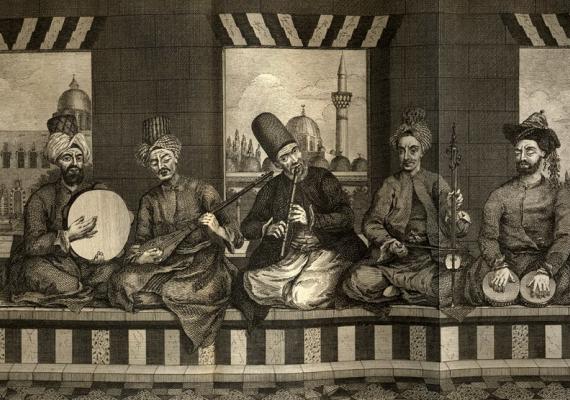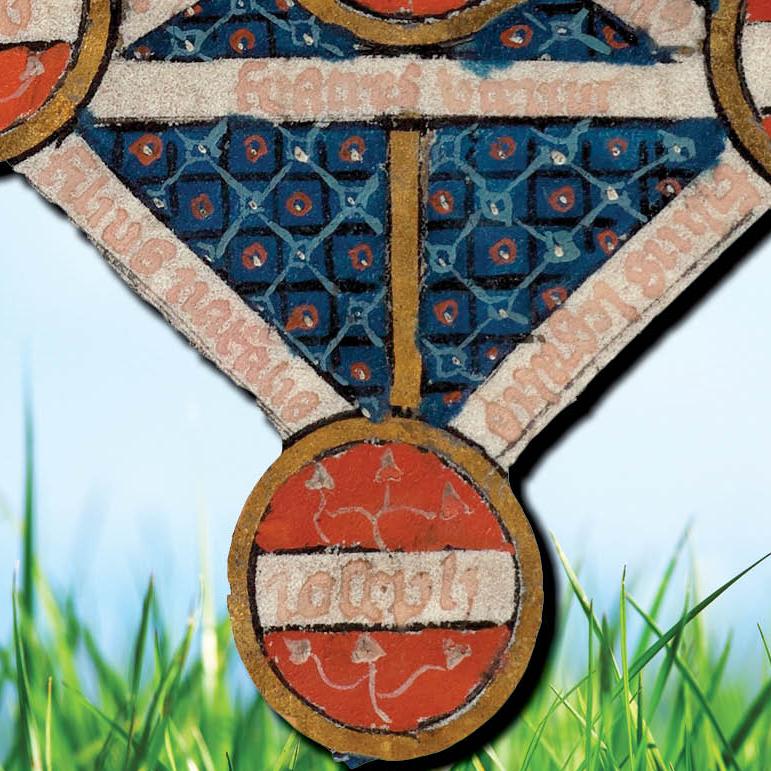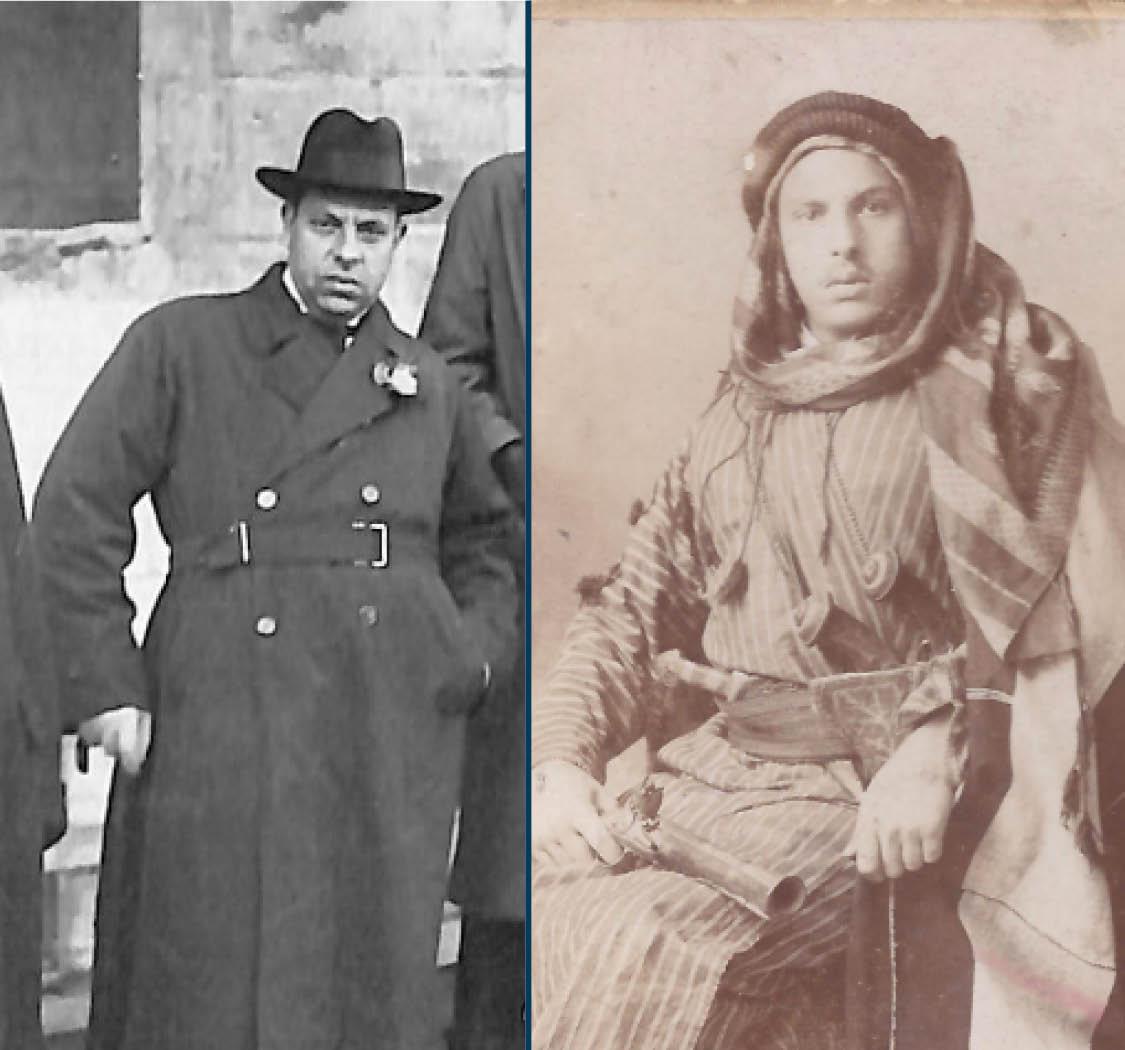JQR Contributor Conversation: Hadar Feldman Samet on Sabbatian Hymns
JQR editor David Myers chats with contributor Hadar Feldman Samet about Jewish messianism and multicultural music.

Hadar Feldman Samet’s essay Ottoman Songs in Sabbatian Manuscripts: A Cross-Cultural Perspective on the Inner Writings of the “Ma’aminim” (JQR 109.4) explores a little-known set of liturgical songs produced and used by members of the religious group devoted to Shabbetai Tsvi, a seventeenth-century messiah who was embraced by Jewish masses all over the world but then rejected by most after his conversion to Islam. A small group of followers built a secretive religion around him as a mystical and messianic figure that has lasted up to today, and Samet brings new light to the way their religious culture developed over time. Here, editor David Myers speaks with her about the extraordinary multilingual and multicultural religious texts at the heart of her research.
David N. Myers: Your article involves study of the songs of a highly secretive group known as the Ma’aminim (believers; also known by the pejorative term Dönme), composed in three languages (Turkish, Ladino, and Hebrew), and written in an esoteric script (Solitreo). How did you come to this area of study? What did you need to learn in order to take on such a subject?
Hadar Feldman Samet: My interest in this area of study started when I was a BA student at the Hebrew University of Jerusalem and participated in Professor Rachel Elior’s course on Hasidism and Sabbatianism. In one of the lessons, Professor Elior introduced both the phenomenon of the Sabbatian Ma’aminim and a publication titled Sefer shirot ve-tishbahot shel ha-Shabta’im (Book of Songs and Praises of the Sabbatians)—one of the first academic editions of the secret sources of the Ma’aminim, and the most best known source on the subject in Jewish studies scholarship for more than seventy years. When I first opened the book, I was astonished. It was love at first sight (love that has not ceased since). I was fascinated by the esotericism and extraordinary cultural fluidity: multilingual texts written in Ladino (Judeo-Spanish), Hebrew, Aramaic, and Turkish, which express messianic Sabbatian heresy using kabbalistic terminology suffused with Sufi (mystical Islamic) concepts, Ottoman poetic motifs, all melodically performed in secret rituals. Ever since, I have devoted my studies to exploring various threads that emerged from my interest in the Sabbatian secret manuscripts. Every aspect took me on a journey that opened into exciting fields previously unknown to me: the Sabbatian movement, Ladino and Ottoman-Turkish languages and cultures, Jewish and Islamic mystical writings and practices, Ottoman musical tradition, and more.
DNM: What do we know about the Ma’aminim? How has scholarship advanced since the time of Gershom Scholem?
HFS: As the Ma’aminim vigorously kept their religious and communal life secret for many years, our knowledge of them remains very partial; even today, more is hidden than known. Scholem, widely credited as the founder of the academic study of Kabbalah, beautifully reconstructed the understanding of Sabbatianism through the prism of an inner development of Jewish history in which the larger historical context seems insignificant. His reading of the texts of the Sabbatian Ma’aminim focused on their heretical faith and perception of redemption, primarily drawn from Jewish sources.
It was only at the turn of the century that scholars began to acknowledge the importance of the Ottoman cultural context in the lives of the Ma’aminim. In Jewish studies scholarship, preliminary steps were taken to identify elements in the Sabbatian secret writings that clearly cannot be understood solely within the frame of Jewish traditions. Another contribution was made by scholars of Middle Eastern studies who emphasize the late Ottoman context of the Ma’aminim and the role they had in the non-Jewish society in which they lived, as well as how they were perceived in the Turkish Republic. These approaches have advanced our knowledge but we still lack a multilayered understanding of the group.
For me, this gap raised the question of how the secret texts of the Ma’aminim—a very rich and reliable source for understanding this group—can be grasped while taking into account the Ottoman background in which they were created. Or putting it in another way: how does the outward Ottoman Muslim identity of the Ma’aminim manifest in their secret identity? Aiming to bridge the disciplinary gap, my research combines philological and paleographic deciphering of mystical texts—techniques commonly used in the academic study of Kabbalah—with cultural and folklore analysis that places them in the broader Middle Eastern context. Through this interdisciplinary approach, the texts are not only situated in context, but they also illuminate larger-scale processes taking place in their surroundings. My work also highlights performative aspects of the texts, which push the non-elite, lay members (men and women) of the community to the foreground of scholarship.
DNM: You identify a corpus of 880 songs from the Ma’aminim, of which you carefully analyzed 340 that contain Turkish incipits (opening lines). How important was music in the culture of the Ma’aminim?
HFS: Music was a prominent art form and a central aspect of Ottoman leisure culture, as well as a religious practice for some groups. I explored how this is reflected in the clandestine communal practice of the Ma’aminim. One of the most intriguing and under-researched characteristics of this song corpus is its incipits: Turkish titles that provide instruction as to the way in which the Sabbatian song is to be performed. These Turkish words are the opening lines of popular Turkish songs which the community members knew from their daily lives in Ottoman urban spaces. In their communal gatherings, the Ma’aminim would use the melody of specific Turkish songs to sing their own Sabbatian songs. This is a known phenomenon in many cultures (sometimes referred to as “contrafactum”), and also very popular among Ottoman Jewish poets, such as Rabbi Israel Najara, the most renowned among them. A substantial number of the Ma’aminim songs had been dated to the nineteenth century—a period for which there is a fairly comprehensive documentation of Ottoman musical traditions. As a result, I was able to identify a sizeable number of the Turkish incipits in the titles of the Sabbatians songs and trace many of their melodies to Turkish songs of the era. Although only about a third of the Sabbatian songs mention specific Ottoman melodies, it is obvious to me that the rest of the songs were sung melodically as well. I hope that in the future additional material will surface to shed further light on the Sabbatian musical tradition.
DNM: You argue that it is not sufficient just to situate the composition of these songs in the frame of Jewish tradition. It is also essential to understand the wider Ottoman cultural setting. This seems to be an intuitive principle for all of Jewish history. So what does this claim mean in the Ottoman setting?
HFS: Of course, it is self-evident that Jewish phenomena should always be studied within a larger context. However, this principle is not always implemented, especially when dealing with mysticism. The esoteric nature of mystical writings makes it tempting to view them as timeless. Regarding the Sabbatian mystical texts, scholars have been aware of the ways in which national and Eurocentric prisms shaped some of the research in previous generations. Nonetheless this scholarship has not yet been entirely revised, and many primary premises remain unquestioned.
My essay in JQR tries to show how the Sabbatian esoteric traditions, which often appear so cryptic as to be ahistorical, are clearly shaped by specific cultural contexts. If we return to the incipits discussed earlier, in addition to their importance in revealing the soundtrack of the communal gatherings, they have also proven key to unpacking the culture in which the Ma’aminim were immersed. When comparing the texts of the Sabbatian songs to the Turkish lyrics, we see that Sabbatian poets appropriated not only melodies and poetic structures, but also core concepts, images, motifs and tropes appropriated from Ottoman sources. One of the most significant benefits of exploring the mystical songs of the Ma’aminim in relation to their contemporary music and poetry is that it expands our understanding of Sabbatian sources beyond the study of Kabbalah and the community’s learned elite. This can show us how a messianic religion was integrated into the mundane reality of community members, and indeed, bring insight into devotional practices in everyday Ottoman urban life.
DNM: The object of praise and devotion for many of the songs is Shabbetai Tsevi. What did he represent in the culture and theology of the Ma’aminim, as reflected through these songs?
HFS: Shabbetai Tsevi is by far the most central figure in the songs, and all aspects of the Ma’aminim’s messianic faith and sense of existence are bound up with him. We should keep in mind that most of the Sabbatian songs were composed more than a hundred years after Tsevi’s passing in 1676. The generations writing and practicing these songs saw themselves as living in a messianic process that had not yet reached ultimate redemption. They did not have a first-hand encounter with the messiah, nor did they personally know anyone who did. The way they maintained his vivid presence in their religious experience reflects the interplay between metaphoric realms—the divine and the earthly—that were inseparable for them.
The first is largely depicted through kabbalistic terminology that presents Tsevi as an entity distinct from the god of their faith, directing the focus of devotional passion to him. Within this frame, Tsevi is positioned as an active part of the divine structure in multiple ways. For example, he can be described as the masculine sefirah (emanation) Yesod and as the feminine sefirah Malkhut, and even both simultaneously. He is also portrayed using worldly images that emphasize his role as a beloved actual person. My essay explores several explicit and implicit means for expressing that duality, such as the wordplay between go’el (redeemer) and gönül (heart), his association with the erotic figure of the köçek (dancing boys dressed as women), and fiery expressions of love. This mixture of an exalted and intimate figure can be found in various mystical traditions, but the specific fusion in the songs of the Ma’aminim is remarkably unique. Representations of Shabbetai Tsevi are best understood as a mixture of Ottoman cultural expressions and Jewish and Sephardi traditions. It is this mix that generated the secretive Sabbatian faith and culture of the Ma’aminim.
Hadar Feldman Samet is currently a Harry Starr Fellow in Judaica at Harvard University’s Center for Jewish Studies.


